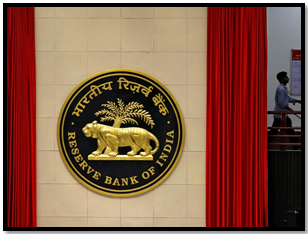“THE INDEPENDENT ROLE OF CENTRAL BANKS IN INDIA AND THE U.S”
Syllabus:
- GS-3-Role of monetary authority and related institutions , RBI and its effectiveness
Focus :
- Top of Form
- The article explores the unique challenges faced by central banks in democracies like India and the US, emphasizing the importance of maintaining their independence amidst political pressures. It examines the implications of political interference on monetary policy decisions, the role of institutional safeguards, and the future outlook for central bank autonomy.
Source - ET
Central Banks in Democracies:
- Discuss the unique challenges faced by central banks in democratic countries like the US and India.
- Highlight the diverse socio-political landscape and its implications for monetary policy decisions.
- Explain how political interference can influence central bank autonomy and credibility.
- Compare the electoral processes in both countries and their potential impact on monetary policy.
- Analyze the historical context of central bank independence in democratic setups.
About Reserve Bnak of India :
Monetary Policy Committee :
|
Political Dynamics and Central Bank Independence:
- Explore instances of political interference in central bank functions, such as public criticisms and pressure.
- Discuss the consequences of political influence on monetary policy effectiveness and credibility.
- Examine the role of political leaders in shaping public perceptions of central bank policies.
- Evaluate the risks associated with central bank independence amid changing political landscapes.
- Highlight the importance of maintaining a balance between political accountability and central bank autonomy.
Case Study: Federal Reserve vs. Reserve Bank of India:
- Provide an in-depth comparison of the Federal Reserve System (Fed) and the Reserve Bank of India (RBI).
- Analyze the historical evolution and legal frameworks governing both central banks.
- Examine the level of independence enjoyed by each central bank and the factors influencing their autonomy.
- Discuss notable instances of political interference or pressure faced by the Fed and RBI.
- Evaluate the effectiveness of institutional safeguards in preserving central bank independence in each country.
RBI’s Autonomy and Policy Implications:
- Assess the extent to which RBI’s actions are insulated from political influence in India.
- Examine the RBI’s role in formulating and implementing monetary policy to achieve macroeconomic stability.
- Discuss the impact of RBI’s independence on financial markets, inflation management, and economic growth.
- Analyze the RBI’s response to external shocks and its ability to navigate political pressures.
- Explore potential reforms or measures to further strengthen RBI’s autonomy and effectiveness.
Challenges and Future Outlook:
- Identify emerging challenges to central bank independence in both India and the US.
- Discuss the implications of political polarization and populist movements on monetary policy decisions.
- Highlight the importance of transparency, accountability, and public trust in central bank operations.
- Propose strategies to safeguard central bank autonomy amidst evolving political landscapes.
- Outline the future outlook for central bank independence and its implications for economic governance.
Associated articles :
https://universalinstitutions.com/heres-looking-at-you-rbi/
Source:The Economic Times
Mains Practice Question :
GS-3
“Examine the role of central banks in democracies like India and the US, focusing on the challenges to their autonomy posed by political dynamics. Discuss the significance of maintaining central bank independence for effective monetary policy implementation and macroeconomic stability.” (250 words)




